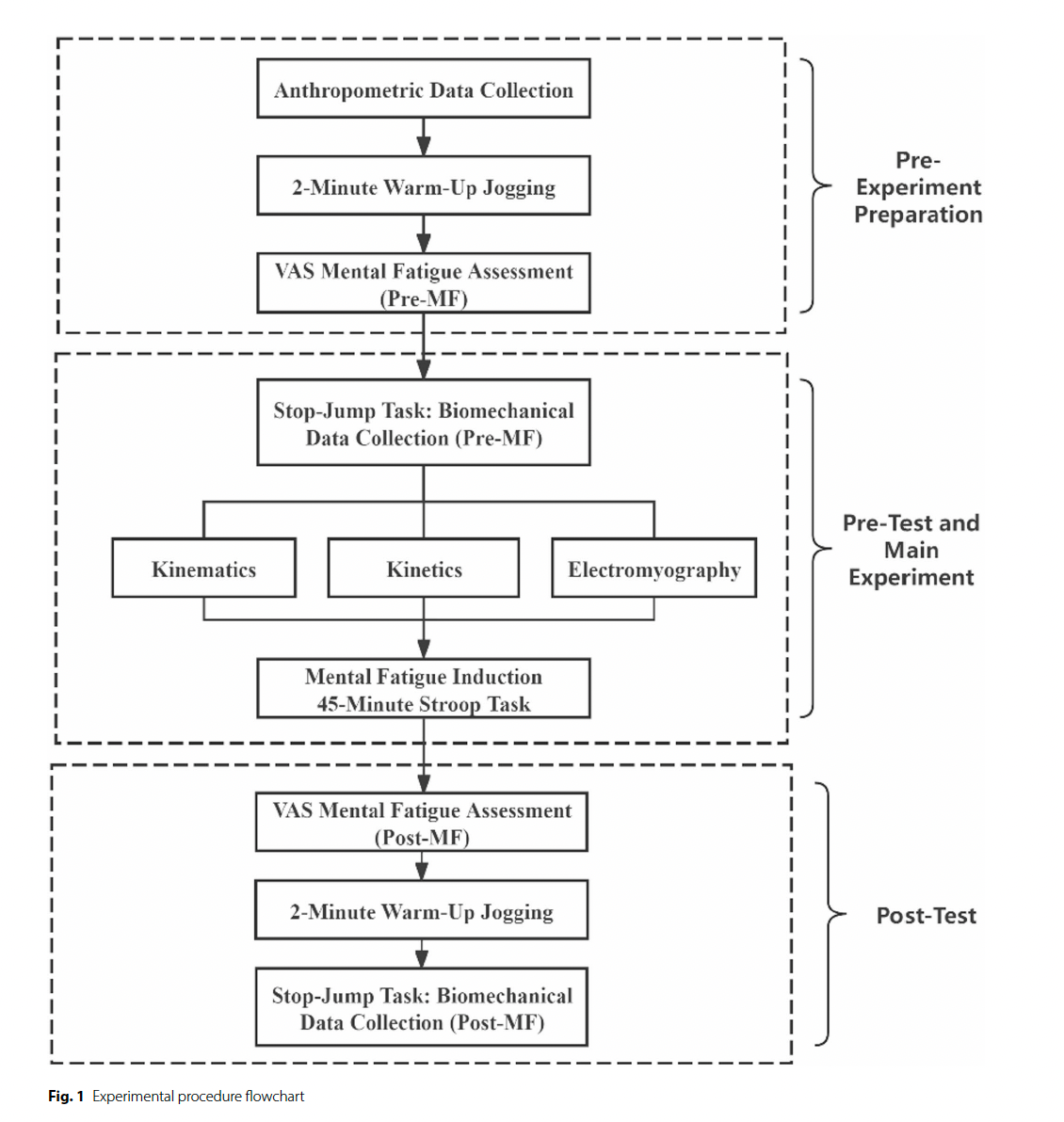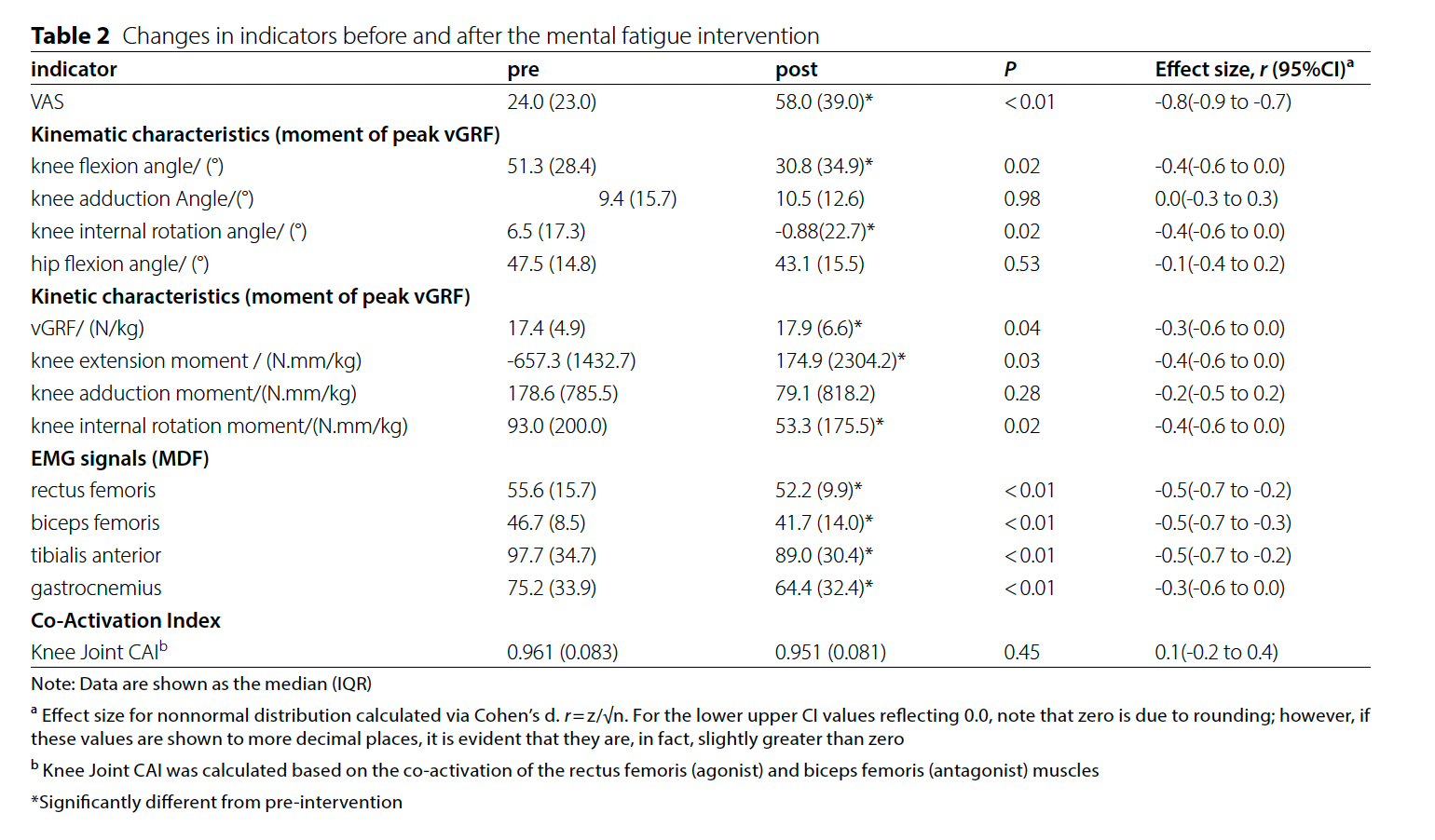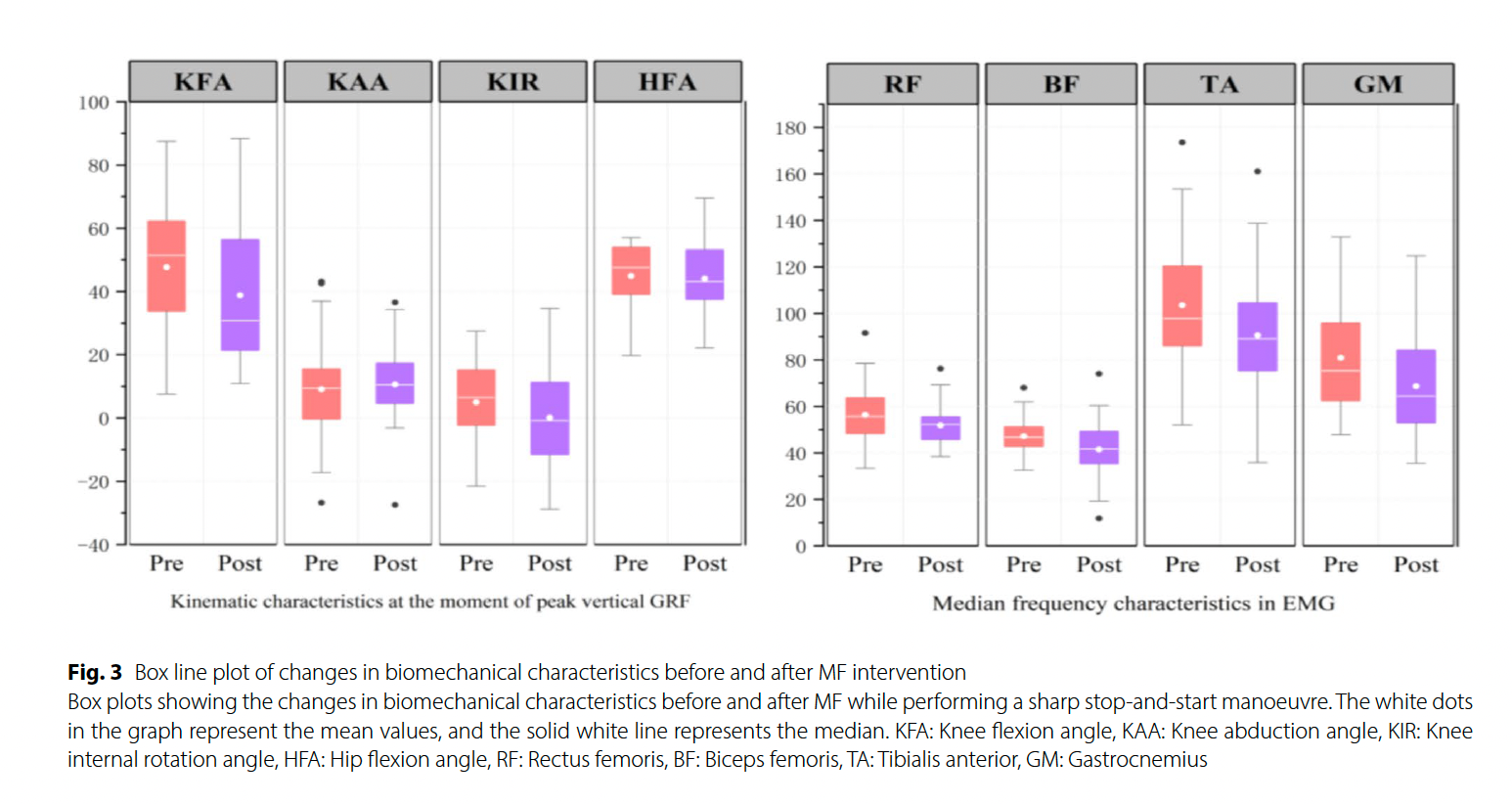Non‑contact ACL injuries often occur during abrupt stop‑jump actions in basketball.
While physical fatigue gets most of the attention, in‑game mental fatigue (MF) may also distort landing mechanics and raise ACL risk.
The researchers investigated how MF affects lower-limb biomechanics during a stop-jump and whether these changes align with known ACL risk factors.
Does mental fatigue alter landing mechanics and elevate non‑contact ACL risk during a stop‑jump?

What Did the Researchers Do?
Researchers had 38 male basketball players perform a jump-stop task before and after a mental fatigue protocol.
Mental Fatigue Protocol
- 45‑min Stroop task (color‑word interference).
- Mental fatigue was rated via a 100‑mm VAS pre/post; post scores jumped, confirming successful MF.
Stop Jump Task
- 5‑step run‑in → abrupt plant on dominant leg → quick cushioning → max vertical jump with both feet on force plates (standardized “stop‑jump”).
Measurements
- Kinetics/kinematics: vGRF; knee/hip angles and knee moments at the instant of peak vGRF.
- EMG: Rectus femoris, biceps femoris, tibialis anterior, gastrocnemius (median frequency as a fatigue marker); knee co‑activation index.

What were the results?
Joint Angles
- Knee flexion angle decreased at peak vGRF; knee internal rotation angle decreased.
- Hip flexion unchanged.
Joint Moments
- Knee extension moment increased; knee internal rotation moment decreased
- Adduction moment NS.
GRF
- Peak vGRF increased post‑MF.
EMG
- Median frequency decreased across rectus femoris, biceps femoris, tibialis anterior, and gastrocnemius (consistent with peripheral fatigue patterns).
- Knee co‑activation unchanged.


What Does This Mean?
- Stiffer landings under MF ⮕ Less knee flexion + higher vGRF is the classic ligament‑dominant profile tied to greater ACL loading during landing/deceleration.
- Quad‑dominant torque ⮕ Higher knee extension moment suggests greater quadriceps demand, which increases anterior tibial shear when the knee is relatively extended—again unfavorable for the ACL.
- Neuromuscular fatigue signal ⮕ Broad drop in EMG median frequency points to fatigued peri‑articular musculature, likely degrading shock absorption and coordination.
Limitations
- Male college‑age athletes only; generalizability to female players and pros is unknown.
- Single maneuver (stop‑jump) with no cuts or unanticipated tasks where cognition is stressed differently.
- Lab-based MF (Stroop) may not perfectly mirror in-game cognitive load, which is often mixed with physical fatigue.
Coach’s Takeaway
- Protect cognition, protect mechanics ⮕ Be conscious of mental fatigue when exposing to more complex biomechanical tasks.
- Manage cognitive load in practice ⮕ Avoid stacking complex tactical learning immediately before heavy decel/landing or jump exposures.
- Bottom line ⮕ Mental fatigue alone (without physical fatiguing exercise) was enough to worsen mechanics toward a higher‑risk pattern during stop‑jump in trained basketball players.
I hope this helps,
Ramsey
Reference
Zhang Z, Zheng B, Zhang Z, Kang J, Li M, Sun Y. (2025). Impact of mental fatigue on lower limb biomechanics and non‑contact ACL injury risk in basketball players during the stop–jump task: a self‑controlled trial. Journal of Orthopaedic Surgery and Research.




